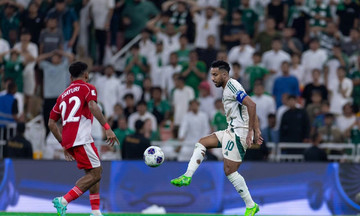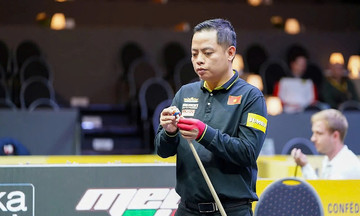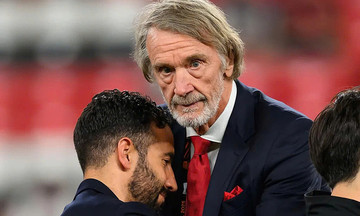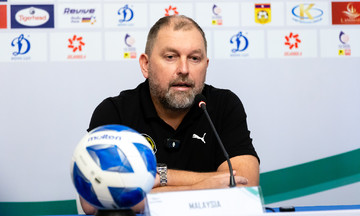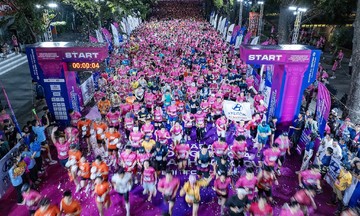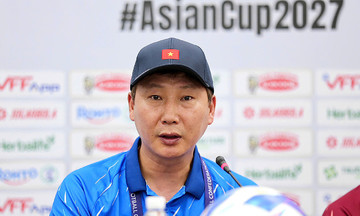Gone was the familiar on-court smile. Djokovic arrived at the 2025 US Open looking weary, a far cry from his usual dominant self. His six-week absence after losing to Jannik Sinner in the Wimbledon semifinals revealed how the extended break had impacted his form.
At 38, Djokovic is at least 9 years older than the other players in the top 20, and his body has endured the wear and tear of 80 Grand Slams – just one shy of Roger Federer and Feliciano Lopez's record. He is like a giant trying to awaken, to restart his once-conquering engine and shake off the rust from a long slumber. Time has undoubtedly left its mark on the Serbian player, making his steps heavier, his shots occasionally less precise.
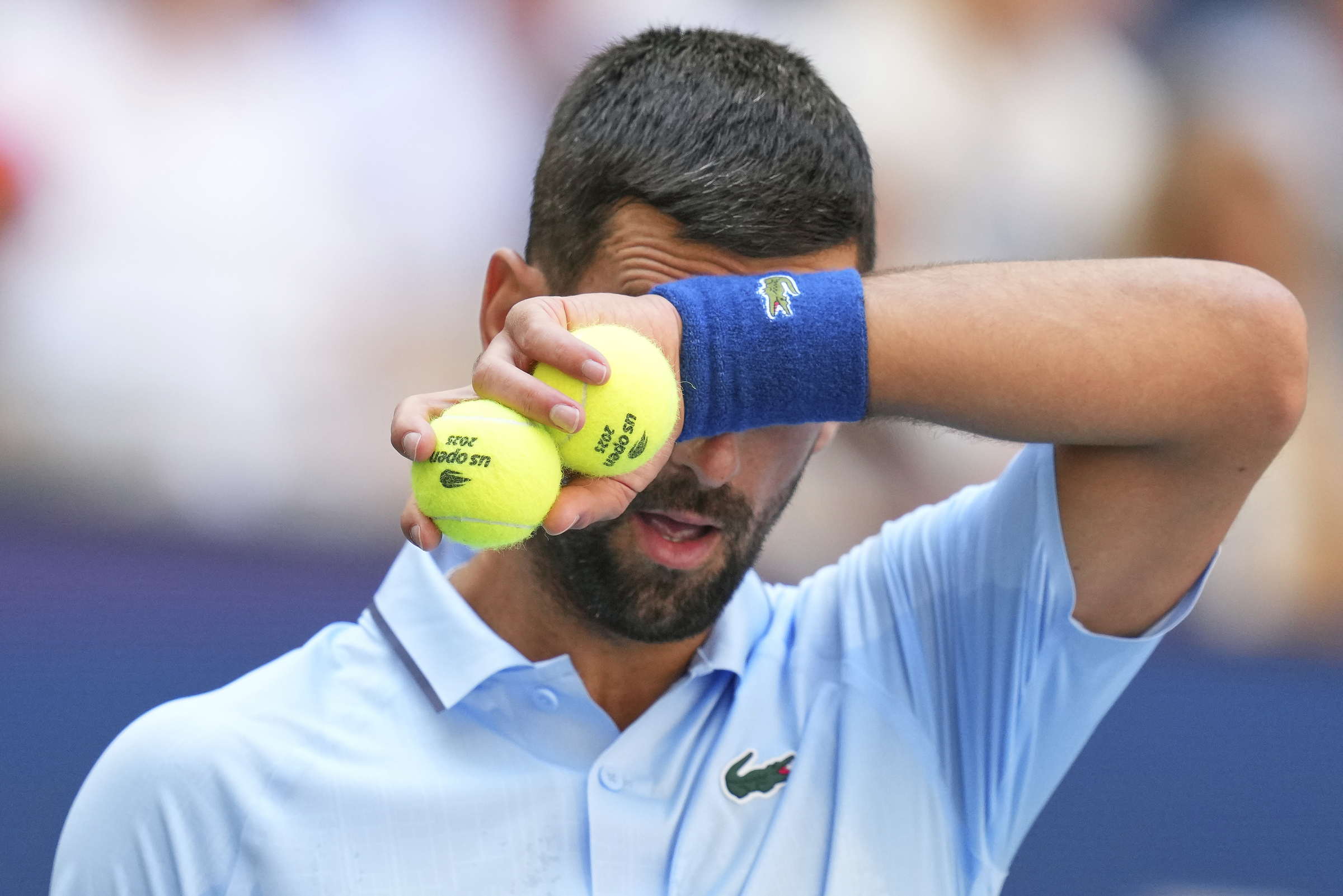 |
Djokovic wipes sweat from his brow during his match against Zachary Svajda in the second round of the US Open on 27/8/2025 in New York. Photo: AP |
Djokovic wipes sweat from his brow during his match against Zachary Svajda in the second round of the US Open on 27/8/2025 in New York. Photo: AP
In his opening match in New York, playing at night in all-black attire, Djokovic showed signs of physical decline against the young Learner Tien. Despite not dropping a set, he struggled in the second. "I was just trying to survive out there," he admitted. His face, flushed and tired, revealed his exhaustion, but Djokovic still displayed his resilience, tightening his game at crucial points to avoid prolonging the match.
"I still have the skill, I still have the motivation, but I wish I was younger…," he said, trailing off thoughtfully. Two weeks at a Grand Slam have become a grueling battle, where any mistake can end Djokovic's run against the relentless pace set by Sinner and Carlos Alcaraz, the new "express trains" dominating men's tennis.
His second-round match against Zachary Svajda, the world number 145 from the US, presented another challenge. Djokovic started poorly, committing 14 unforced errors in the first set and trailing 1-3 in the third. Continuously pressured, he relied on experience and capitalized on Svajda's leg injury to fight back, winning 6-7(5), 6-3, 6-3, 6-1.
On the Arthur Ashe court, his face was far from radiant. "Honestly, my performance wasn't great," Djokovic admitted. "I'm not satisfied with how I played, although I have to give credit to Svajda, who played well. It's unfortunate he got injured."
The victory over Svajda not only advanced Djokovic but also earned him a new record: his 75th appearance in a Grand Slam third round, surpassing Federer. It was also his 19th time in the US Open third round – equaling Federer's record – and his 191st victory on hard courts at a Grand Slam, also tying Federer. These are impressive figures, but for Djokovic, they seemed like secondary milestones, not enough to make him smile.
"There's always something to prove when you step on the court, to show you can still win a tennis match," Djokovic emphasized. "I understand that after all the victories and the years on tour, many think I have nothing left to prove or achieve. But for me, the most important thing now is to give my all and find a way to win."
Despite accumulating countless accolades, Djokovic remains a player who is never satisfied. Not because he no longer finds joy on the court, but because he's unhappy when he can't play as well as he wants. His body language reflects this: the bowed head, the frustrated shouts, and the gestures adjusting the muscles around his shoulder during the match with Svajda show a Djokovic struggling to regain his rhythm.
Djokovic is aware of the harsh reality he faces: competing with less speed and less "fuel." A struggle between the desire to win, to continue fighting for a 25th Grand Slam title, and accepting his physical limitations, knowing he's no longer young. Yet, the survival instinct, honed from his past, remains. As he once shared: "Everything I went through during the difficult times for my family in the Balkan war brought me here. Failing in tennis was not an option. I had to succeed. It was a matter of survival."
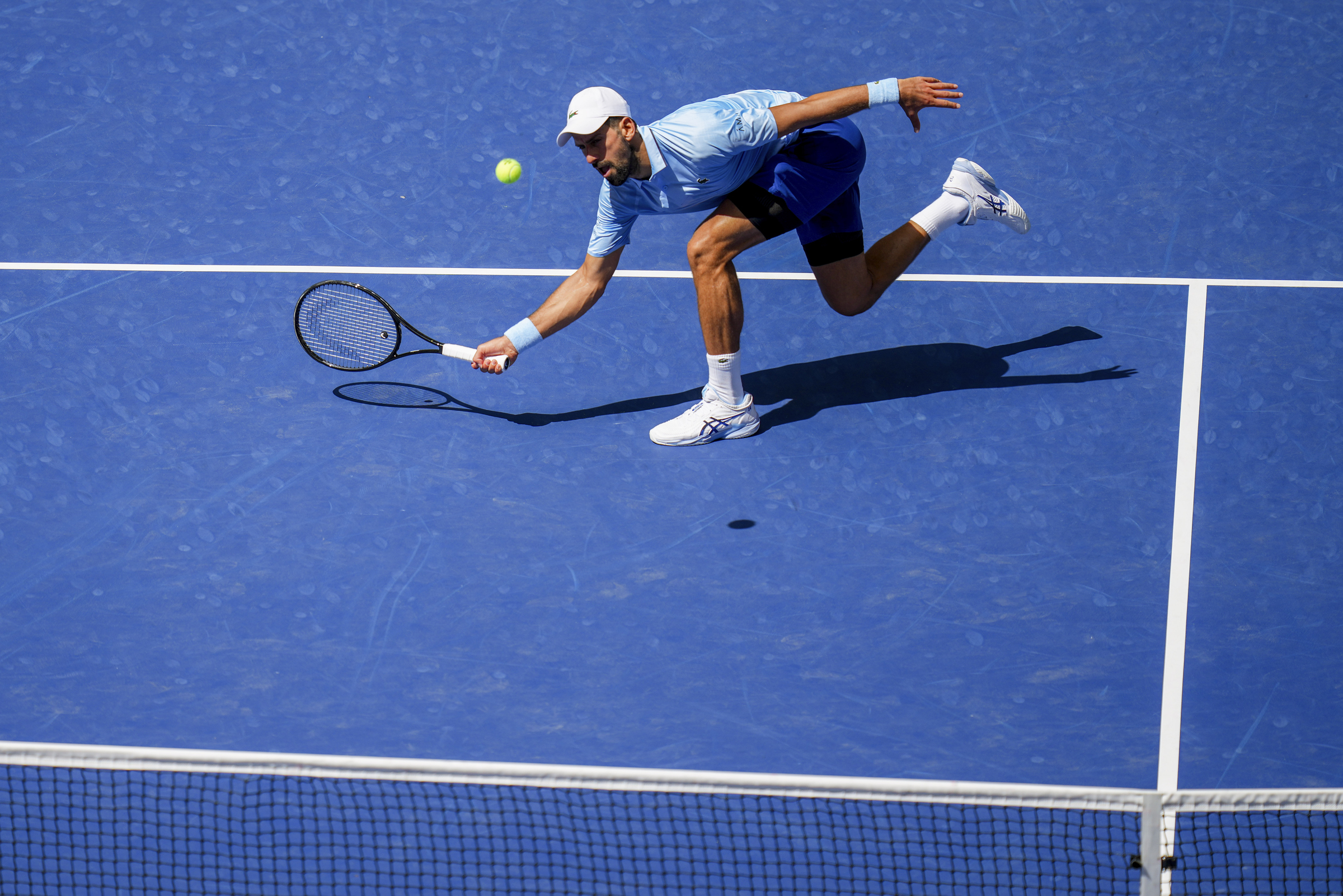 |
Djokovic returns a shot during his match against Zachary Svajda in the second round of the US Open on 27/8/2025. Photo: AP |
Djokovic returns a shot during his match against Zachary Svajda in the second round of the US Open on 27/8/2025. Photo: AP
While packing his bag for practice each morning or wandering through locker rooms worldwide no longer excites him, Djokovic still craves competition against younger players. "The motivation is still there. I repeat, I'm disappointed with my performance. But I still love the competition, and that's why I continue to push myself," he affirmed. "More importantly, I still want to play against the young guys; otherwise, I wouldn't be here."
In an interview with YouTuber Jay Shetty, author of the 2020 book Think Like a Monk, Djokovic confided: "I've achieved what I wanted, but I want more. It comes from purpose, inspiration, and passion for this sport, as well as bringing joy to the audience watching me play. I feel like I'm still radiating light when I play. The desire to do more comes from the feeling of not having achieved enough, and this stems from my background, from my relationship with my father. It's the internal battle I constantly face."
However, Djokovic also acknowledged that family is now his top priority. "If I go far in the US Open, I'll miss my daughter Tara's birthday on 2/9, so I hope not to miss it again," he shared, hinting that his nearly 20-year journey at the top might be nearing its end.
The third-round match against Cameron Norrie, scheduled for the morning of 29/8, will be another test for Djokovic. But with six wins in their six previous encounters – including a dominant victory in the fourth round of Roland Garros this year – the issue lies not with Norrie but with Djokovic finding his best form to face players like Sinner or Alcaraz in later rounds.
Concluding the press conference after his victory over Svajda, Djokovic finally offered a rare smile, promising: "Don't worry about me, I'll clench my fist tighter next match, just to make you happy!" While the 2025 US Open hasn't seen and may not see Djokovic at his peak, with a legend, nothing is impossible, and this giant is certainly not asleep yet.
Compiled by Hoang Thong




